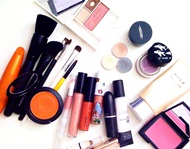 The beauty industry is massive, a huge cultural force in a tight, symbiotic relationship with celebrities and the celebrity-oriented media. So by its very nature, it creates massive problems for anyone seeking to get to the truth about the products it makes and promotes, writes Prof Timothy Caulfield of the School of Public Health at the University of Alberta, in The Atlantic.
The beauty industry is massive, a huge cultural force in a tight, symbiotic relationship with celebrities and the celebrity-oriented media. So by its very nature, it creates massive problems for anyone seeking to get to the truth about the products it makes and promotes, writes Prof Timothy Caulfield of the School of Public Health at the University of Alberta, in The Atlantic.
Many experts are not independent scientists, but dermatologists with a clinical practice and, as such, benefit from a thriving industry. ‘I am not saying that physicians knowingly twist information about the efficacy of beauty treatments, but there is ample evidence that such conflicts of interest can have an impact on how research is presented and interpreted.’
In addition, little literature produced by independent researchers is out there. For many beauty products, there seem to be either no data or only small studies produced by proponents of the product. To some degree, this is understandable. Government research entities, such as the U.S. National Institutes of Health or the Canadian Institutes of Health Research, have little interest in funding big double-blind placebo-controlled studies on the efficacy of, for instance, the bird-poop face cream used by David and Victoria Beckham. So there isn’t a lot of good science to draw on.
To make matters worse, the popular press is rarely critical of new beauty products. While I found many excellent and balanced media stories on beauty treatments (usually panning them), the vast majority of articles simply trumpet their alleged value, using vague descriptors such as revitalise and radiate. Rarely did I find any real evidence or expertise beyond personal testimonies (which I don’t need to remind you are not evidence). The so-called experts who are quoted in these stories are often part of the beauty industry or individuals with no research background.
Publishers don’t generally sell magazines by reminding readers that nothing works. Consequently, getting straight answers about anti-ageing and beauty products is nearly impossible. There exists a confluence of fact-twisting forces: lots of money to be made by manufacturers and providers, huge advertising campaigns that deploy vast quantities of pseudoscientific gobbledygook, a lack of independent research and information, and consumers who desperately want the products to do for them what is claimed. The cumulative impact of all these forces results in a massive bias toward representing a product or procedure as effective. I call this the “beauty-industry efficacy bias,” or BIEB for short. (Note: The link between the BIEB acronym and Justin Bieber’s nickname was not intentional, but it does work out well.)
Given the existence of the BIEB, we should always bring a furiously critical eye to the assessment of any claim made by Big Beauty. Phrases such as “clinically proven” or “dermatologist approved” have little meaning because they could refer to almost anything. For example, what kind of study led to the representation that a given product was clinically proven? Did the manufacturers simply ask a couple of buyers? Do not be fooled by this kind of language, particularly when the presence of the BIEB makes critical analysis of the claims unlikely.
In addition to the BIEB dilemma, history tells us that a skeptical position is almost always correct. As with trendy diets, after a bit of time it almost invariably becomes clear that the alleged benefits associated with some new, exciting anti-ageing beauty product can’t live up to the hype.
[link url="http://www.theatlantic.com/health/archive/2015/05/the-pseudoscience-of-beauty-products/392201/?utm_source=nextdraft&utm_medium=email"]Full The Atlantic article[/link]
